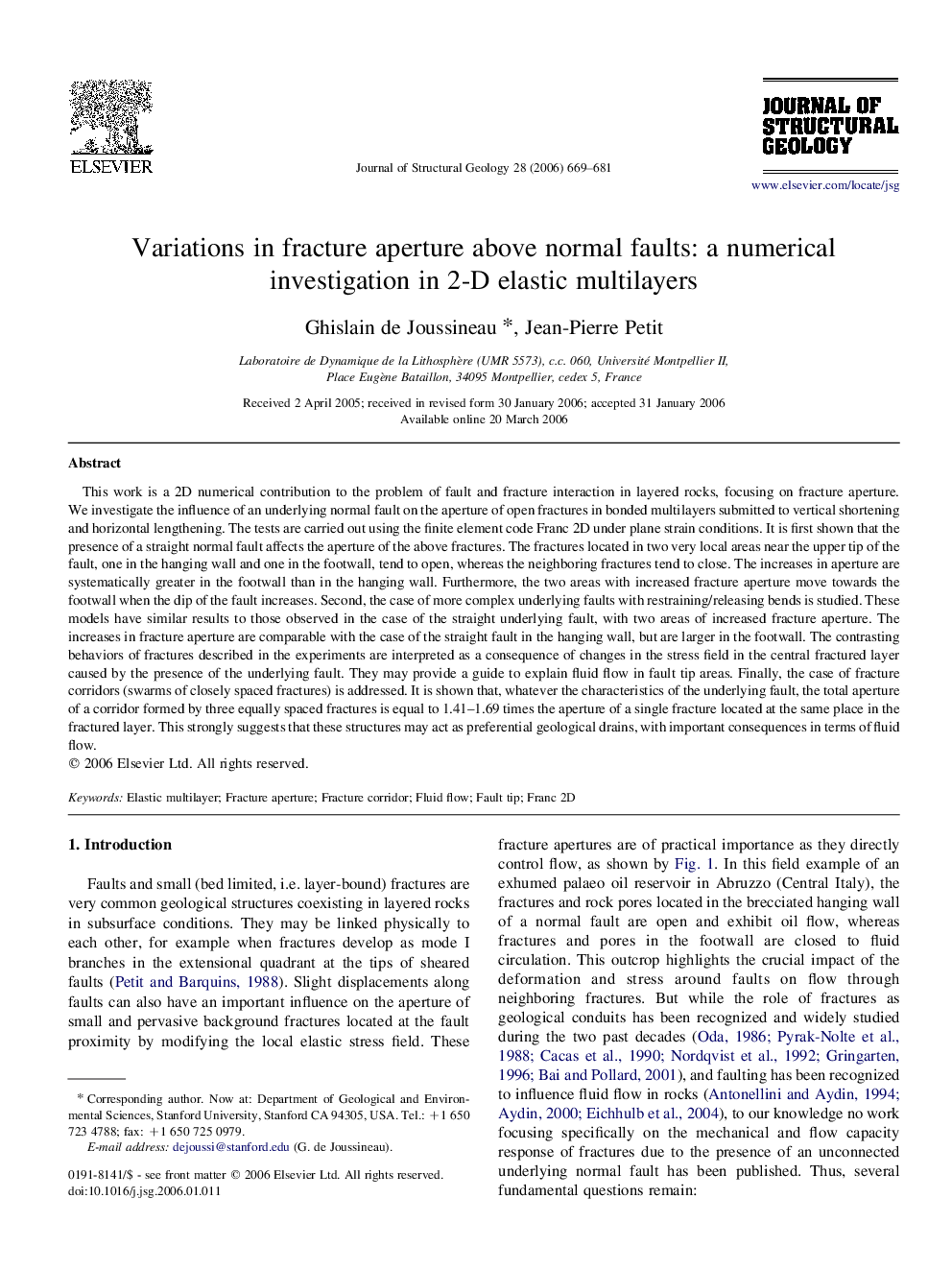| Article ID | Journal | Published Year | Pages | File Type |
|---|---|---|---|---|
| 4734275 | Journal of Structural Geology | 2006 | 13 Pages |
Abstract
This work is a 2D numerical contribution to the problem of fault and fracture interaction in layered rocks, focusing on fracture aperture. We investigate the influence of an underlying normal fault on the aperture of open fractures in bonded multilayers submitted to vertical shortening and horizontal lengthening. The tests are carried out using the finite element code Franc 2D under plane strain conditions. It is first shown that the presence of a straight normal fault affects the aperture of the above fractures. The fractures located in two very local areas near the upper tip of the fault, one in the hanging wall and one in the footwall, tend to open, whereas the neighboring fractures tend to close. The increases in aperture are systematically greater in the footwall than in the hanging wall. Furthermore, the two areas with increased fracture aperture move towards the footwall when the dip of the fault increases. Second, the case of more complex underlying faults with restraining/releasing bends is studied. These models have similar results to those observed in the case of the straight underlying fault, with two areas of increased fracture aperture. The increases in fracture aperture are comparable with the case of the straight fault in the hanging wall, but are larger in the footwall. The contrasting behaviors of fractures described in the experiments are interpreted as a consequence of changes in the stress field in the central fractured layer caused by the presence of the underlying fault. They may provide a guide to explain fluid flow in fault tip areas. Finally, the case of fracture corridors (swarms of closely spaced fractures) is addressed. It is shown that, whatever the characteristics of the underlying fault, the total aperture of a corridor formed by three equally spaced fractures is equal to 1.41-1.69 times the aperture of a single fracture located at the same place in the fractured layer. This strongly suggests that these structures may act as preferential geological drains, with important consequences in terms of fluid flow.
Keywords
Related Topics
Physical Sciences and Engineering
Earth and Planetary Sciences
Geology
Authors
Ghislain de Joussineau, Jean-Pierre Petit,
